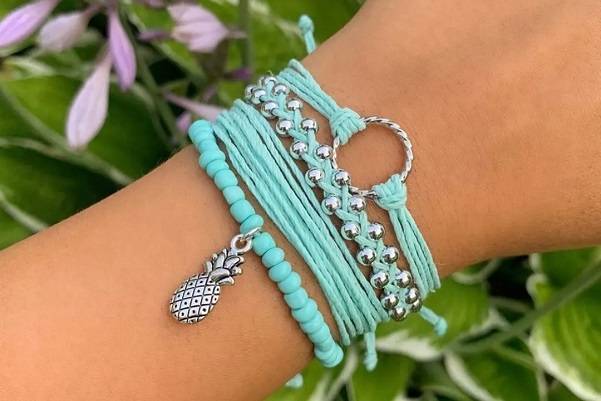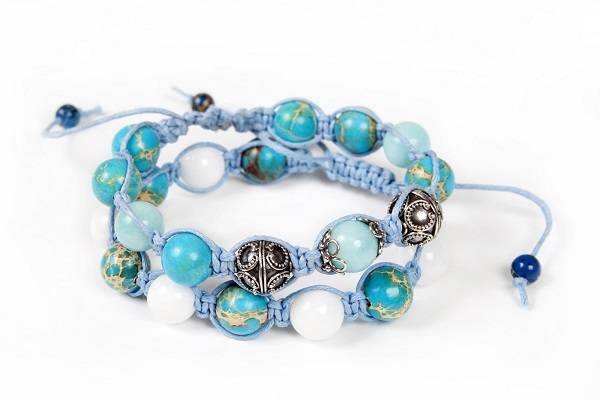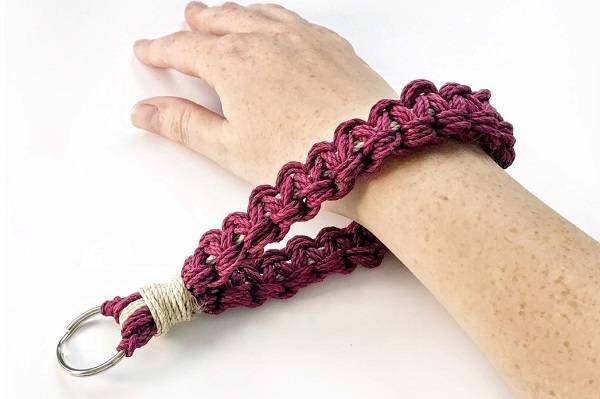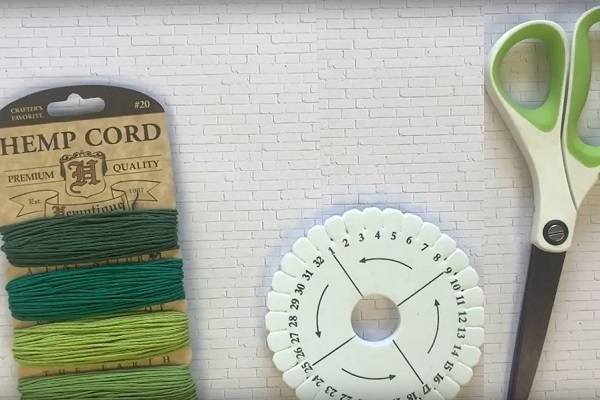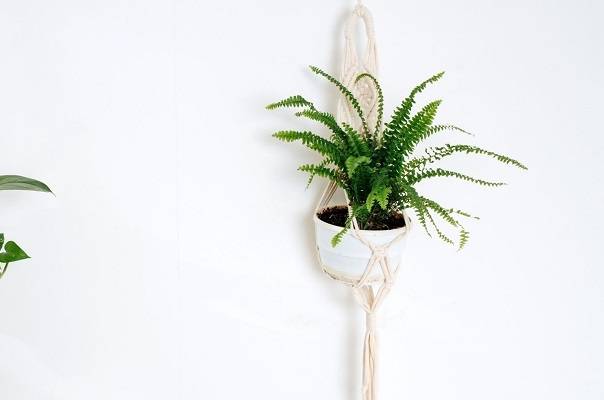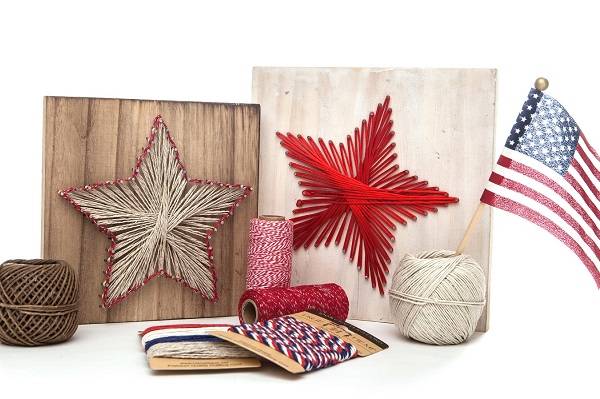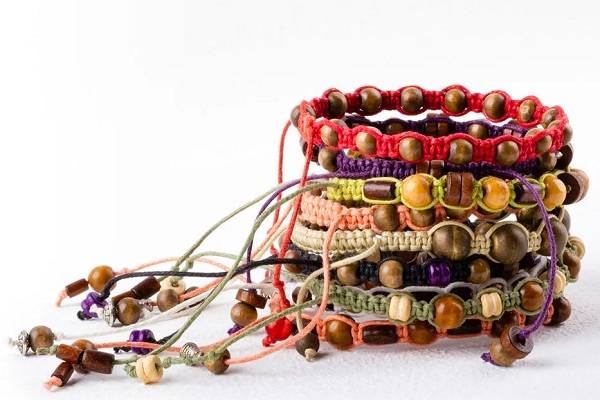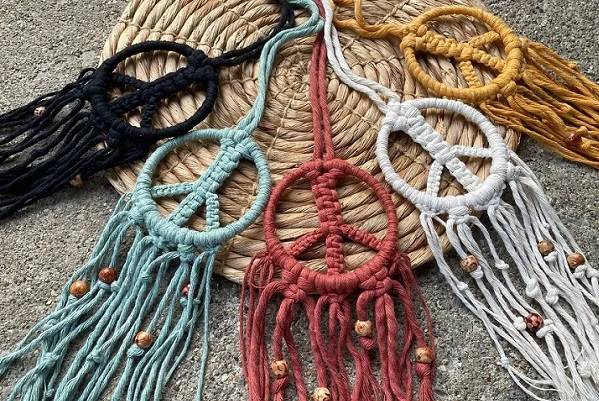JEWELRY MAKING BASICS
Jewelry Making for Beginners – Simple Steps for Crafting Your First Piece
Learn How to Start Making Custom Handmade Jewelry at Home. Basic Techniques, Tools, Supplies, Ideas & Video Tutorials.

Innovation & Quality
Developing and supplying premium-quality, sustainably grown, consumer products
100% Natural
Organically Grown and Ethically Sourced
hemp and other natural fiber products
Shipping
We offer fast shipping
Your order out within 1-3 days
Wholesale
Visit our wholesale portal to register or login to your account
Jewelry making is a fun and creative hobby that allows you to express your ideas and artistry. Crafting charming accessories to wear or to give as gifts to family and friends genuinely enriches quality of life and leads to a stronger sense of purpose. Plus, you can handcraft unique pieces as business and earn income for something you sincerely love doing. Beaded necklaces, braided bracelets, woven belly chains, hair accessories, or pendant earrings can be simple to create and also very marketable, as many consumers prefer buying exclusive items from small businesses.
Table of Contents:
Shop Eco- Friendly Jewelry Making Supplies at Hemptique
At Hemptique, our mission is to provide crafters around the world with first-class jewelry making cords. Our sustainable craft merchandise is carefully sourced from plant fibers and has exceptional qualities which ensure easy handling, long shelf life, and eco-friendliness. If you are looking to start making jewelry as a hobby or business and need specialty jewelry cording, strings, or beading thread to go with your beads, charms, and pendants, visit our online shop. Our product line includes a variety of strings including #20 (1mm) hemp cord spool, hemp thread 6 pc set, hemp wire cord, premium linen thread, waxed cotton cord, leather cord, and waxed polyester thread. Alongside threads, we offer DIY hemp bracelet kits in various color combinations, suitable for novice crafters and kids. Our products are incredibly strong and durable and are manufactured without toxic chemical compounds. Since they are easy to work with and gentle on hands, they are appropriate for kids, beginners and professional jewelers who spend long periods of time crafting with hands. Retailers and distributors may apply for a wholesale account. Individual consumers can enjoy the benefits of volume pricing by sending a bulk/large quantity request.
Why Start Jewelry Making?
Jewelry making is one of the most rewarding hobbies you can start, whether you're looking to explore your creative side or thinking about turning it into a small business. It’s an accessible craft with plenty of benefits, both personal and practical. Here’s why it’s worth starting:
It's Easy to Get Started
Unlike some crafts that require expensive equipment or specialized skills, jewelry making is beginner friendly. You don’t need a lot of tools or materials to start creating beautiful pieces. With just a few essential supplies like pliers, string, and beads, you can begin crafting your own designs right at home. Plus, the basic techniques like stringing and beading are simple to learn and fun to practice.
Low-Cost, High-Creativity
Jewelry making offers a lot of creative freedom without a huge upfront investment. You can start small with basic supplies and affordable materials like hemp cord, beads, and charms. As your skills develop, you can experiment with more complex designs or premium materials like leather or precious metals. The possibilities are endless, whether you prefer minimalist pieces or bold designs.
It's a Great Creative Outlet
Jewelry making allows you to express your personality and creativity in a tangible way. Each piece you create is unique and reflects your own style. You can experiment with colors, textures, and shapes to craft accessories that match your mood, outfit, or special occasion. The creative potential is limitless, making it a perfect hobby for those who love hands-on projects.
Perfect for Gifts and Personal Use
Handmade jewelry makes thoughtful, personalized gifts for family and friends. Whether it’s a birthday, holiday, or special occasion, a custom-made bracelet or necklace shows you’ve put time and care into creating something unique. And of course, you can also enjoy wearing your creations and showing off your own handmade style.
Potential for Starting a Small Business
If you’re looking to turn your hobby into a side business, jewelry making offers great opportunities. Many people love buying handcrafted, unique pieces, and there’s a growing demand for items made with eco-friendly materials. Platforms like Etsy make it easy to sell your creations online, while craft fairs and social media allow you to reach a broader audience. With practice, you can transform your passion into a small business and even earn extra income from it.
Mindful and Relaxing
Jewelry making is also a relaxing and mindful activity. The repetitive motions of stringing beads or wrapping wire can be meditative, helping to reduce stress and improve focus. It’s a great way to unwind at the end of the day while still feeling productive and creative.

How To Become A DIY Jewelry Maker
Before you start making jewelry as a side business or a new career, you will most likely spend time learning and developing your skills.

Research the details of this craft and learn terminology
- Practice different techniques to determine which one is the most appealing to you
Focus on styles and techniques you are most comfortable with. The more you practice, the better your skills will become
- Determine the type of materials you would like to work with. Choose first-class materials for high-quality, long-lasting products
- Get necessary tools and equipment
- Allocate work space. Set up your work station at a desk or a table with plenty of light. Ergonomic chair would also be preferred as you will spend long time sitting
- Sketch beginner-friendly designs or find inspiration online
As you begin your journey into jewelry making, it’s fascinating to realize that this craft is part of a rich history that dates back thousands of years. By learning the techniques and skills of modern jewelry making, you’re continuing a tradition that has evolved across cultures and civilizations. Before diving into the techniques and tools, let's look at how jewelry making began and the timeless significance it holds.
The Origins
The art of jewelry dates back thousands of years, when ancient civilizations created personal decoration or adornment pieces. Earliest pieces date from about 100,000 years ago and they were made from shells, animal bones, pebbles, and wood.
It is believed that metal jewelry making (gold, silver, bronze) was invented by the ancient Egyptians, Greeks, and Romans around 3,500 BCE, while elaborate filigree techniques emerged during the Middle Ages. Today, with the rise of eco-consciousness, there is a growing demand for eco-friendly items, upcycling, ethically sourced gemstones, and fair-trade practices.
Jewelry Making Techniques
You may choose to start making jewelry either as a hobbyist or as a professional jeweler, but have you ever wondered what makes handmade pieces different from those that are mass-produced? Lots of buyers are opting for hand-crafted custom-made articles because of their superior craftsmanship, uniqueness, personalization and local business promotion.
The originality of these handicrafts come to life through various jewelry making types and techniques mentioned below.
The originality of these handicrafts come to life through various jewelry making types and techniques mentioned below.
Stringing
This technique involves attaching beads onto a single string (thread or wire) with needle. It’s the most popular technique among hobbyists around the world, as it is simple to learn and easy to recreate. Beads are small, decorative pieces with hole in the middles. They can be made of wood, clay, plastic, glass, shells, seeds, etc. They range in size, colors, and weight boosting your imagination and giving you opportunity to express your creativity and boost your productivity. Using stringing technique you can craft any type of jewelry like necklaces, bracelets, hair pins, anklets and earrings.
Metalsmithing
This type includes various techniques of shaping metal into desired shapes. Some of the most common techniques are casting, hammering, molding, soldering, and forging. A craftsperson can use various materials such as copper, iron, titanium, 316L stainless steel, gold, silver, platinum, brass, etc. Metalsmithing is used to create rings, chains, charms, pendants, brooches, armlets, chatelains, and any other type you can think of.
Wire wrapping
To create stunning pieces using this technique, you will use special tools to wrap wire around gemstones or beads in any design or shape you want. This type of creative outlet gives you an abundance of possibilities for personal expression. Although this technique may seem too difficult at first, with some practice and continuity, you can accomplish good results. Use wire wrapping to craft DIY ear wires, jump rings, pins, rings, etc.
Kiln-formed (fused) glass
This method entails kiln firing pieces of cut glass to create beautiful small wearables like pendants, beads, charms, or decorative buttons. By arranging glass pieces in specific order you are able to customize the design and make it unique for every item you make.
Polymer clay technique
As the name implies, you will use polymer clay to make pretty new accessories. Initial investment is not too big, as you will need just a few basic tools to start and you can bake the clay in conventional oven.
Beading
Beading is similar to stringing as it entails making items using beads. However, it is also a much broader technique than stringing, as it involves various methods of attaching and arranging beads, such as knotting, weaving, stringing, bead crochet, loom beading, bead embroidery, macrame with beads, off-loom beading, bead tatting, etc.

Bead knotting and stringing techniques, Seafoam hemp cord bracelet by Hemptique
Jewelry Pieces You Can Make as a Beginner
Once you have the basics down, the fun really begins! You can start creating a wide range of jewelry pieces with just a few tools and materials. Here are some popular items to consider:

Necklaces
Start with simple beaded necklaces, using stringing techniques to create designs with different shapes, sizes, and colors. You can also try making pendants with wire wrapping for a more intricate look.

Earrings
Earrings are a great way to practice basic wire wrapping. From simple hoop earrings to more complex designs with beads or charms, they’re a perfect beginner project that offers endless possibilities for customization.

Bracelets
Beaded bracelets, charm bracelets, or macrame friendship bracelets are ideal for beginners. They’re quick to make and allow you to experiment with different materials like hemp, leather, and cotton cords.

Rings
Simple wire-wrapped rings can be crafted with just a few tools and materials, making them an easy entry point for beginners. Experiment with different wire thicknesses and add beads or stones for a unique touch.

Anklets
Similar to bracelets, anklets are fun to make and can be customized with beads, charms, or even braided cords for a boho-inspired look.

Hair Accessories
Create your own hairpins or barrettes by adding decorative elements like beads or small charms using basic wire wrapping techniques.
These items are great for personal use, gifting, or even selling once you’ve developed your skills. By experimenting with different styles and techniques, you’ll find yourself constantly improving and discovering new ways to express your creativity.
Essential Tools for Making Jewelry
You will need to purchase your tools and materials based on the type of technique. As this article is intended for individuals who are just starting their DIY crafting, we will focus on the tools for the most common technique for beginners – stinging (or beading). If you don’t plan to use sliding knots to secure the ends, apart from the cord and beads, you will also need lobster clasps and jump rings.
Stringing tools
Scissors – sharp scissors to cut fiber cords or thin wire
- Bead stringing needle – specialized wire needles with narrow eyes for easier threading
- Extras – protective mat (or piece of cloth to prevent beads from rolling onto the floor), containers for beads, jewelry design board
Beading tools
- Pliers - chain nose, flat nose, round nose and bent nose pliers
- Thread snips – used to cut cord, thin wire, yarn, textile
- Stinging needle – for faster threading
- Bead reamer – this tool used to widen the holes in the center of the bead
- Small flies – to smoothen out the exposed edges of wire

Choose the Right String
Finding the right cord is essential in any DIY jewelry project. Whether you are simply threading the beads, doing a macrame bracelet, or weaving the beads with thread, you have to ensure the string you choose will hold them securely in place and will withstand normal wear and tear. Take a look at some guidelines and specifics of each material before you pick your string.
Hemp Cord

As natural and biodegradable material, hemp is a highly popular eco-friendly choice for macrame, braiding, stringing, kumihimo, knotting, and beading. The fiber made from industrial hemp is exceptionally strong and also naturally hypoallergenic which is very important when it comes to products that come into direct contact with skin.
For crafters, hemp is ideal to work with because it is durable and can hold up can a lot of wear and tear. It comes in various thicknesses and colors, it knots well, and is offered in many colors. It combines well with other materials such as leather, fabric, linen, and wire.
Characteristics: 100% natural & biodegradable, Moisture resistant & hypoallergenic, Highly durable
Best suited for: stringing, macrame, weaving, braiding and beading with large beads
Recommended hemp string: #20 (1mm) Hemp Cord Spools for knotting, macrame, and weaving // #48 (1.8mm) Hemp Cord Spools for more intricate designs //Magical Collection Hemp Cord Spools to add shine and sparkle to your design Lightly Waxed Linen Cord

Linen cord is made from flax plant and is known for its strength and smooth texture. This versatile cord can be used for a variety of different crafts and facilitates creating of items that will last a long time. A light coat of wax provides smooth finish, prevents fraying, and ensures knots are tight and secure.
Best suited for: stringing, braided jewelry, macrame, weaving and natural looking accessories
Recommended linen cords:Premium Linen Cord and Premium Linen Thread
Recommended linen cords:Premium Linen Cord and Premium Linen Thread
Leather Cords for Jewelry

Leather is very popular material for beading, especially round leather cord. You can use it to make jewlery with large beads, or to make wrap bracelets and choker necklaces. To close leather cords, use adjustable knot, a clasp, or a button.
Characteristics: Soft and durable, Versatile, Easy to work with
Characteristics: Soft and durable, Versatile, Easy to work with
Best suited for: stringing, wrap bracelets, necklaces and large hole beads
Recommended product: Leather Cord 1mm Round and 2mm Round leather cord
Recommended product: Leather Cord 1mm Round and 2mm Round leather cord
Polyester Waxed Thread

High-tenacity poly waxed threads are perfect for making intricate items. They are very strong and have high resistance to breaking. Polyester thread is waterproof and the surface is smooth and silky.
Best suited for: knotting, friendship bracelets, braiding and stringing
Recommended products: 0.8mm Braided & Flat Waxed Thread /1.0mm Silky Smooth Waxed Thread
Recommended products: 0.8mm Braided & Flat Waxed Thread /1.0mm Silky Smooth Waxed Thread
Cotton Cords
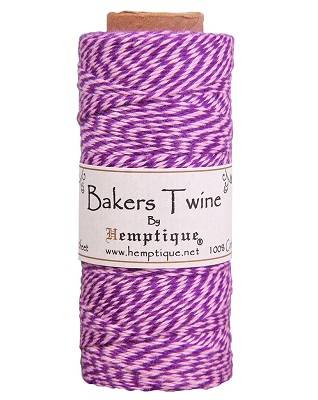
Cotton is multi-purpose material that is easy to work with and soft on hands. Although it is not as stiff as some other materials, it can still be used for making jewelry. Adding a coat of wax will prevent fraying and add extra sheen to the final product.
Best suited for: stringing, beading, macrame and braiding
Recommended products:Cotton Bakers Twine 2-Ply Spools – 2 color twine // Cotton Bakers Twine 2-ply Spools Metallic – for shimmering touchWatch Jewelry Making Video Tutorials
Below we have a few of the most popular DIY jewelry making ideas we have shared on our website. With detailed instructions and video tutorials you will be able to learn basic techniques, build confidence, and bring your visions to life. And all of that with just a few materials! You can also use these ideas as inspiration for handmade jewelry gifts for birthdays, special events, or holidays.
Looking for some inspiration? Check out our Knowledge Base.
Where To Buy High Quality Strings
Jewelry making is a beautiful craft of creating handmade pieces of art. As with any other hobby or line of work, it is important to have the right supplies which are long-lasting so that your creations can last a long time.
7 Common Mistakes to Avoid for Beginners
Starting your jewelry-making journey is exciting, but like any new skill, there can be a few bumps along the way. To help you avoid frustration and improve your skills faster, here are some common mistakes beginners often make and how to avoid them.
1. Using the Wrong Tools
Many beginners think they can use household tools like kitchen scissors or pliers from a toolbox. While these may work in a pinch, using the proper tools designed specifically for jewelry making, like jewelry pliers and bead stringing needles, will make your projects easier and result in a cleaner finish. Investing in a basic set of jewelry-making tools will save you time and improve the quality of your pieces.
2. Skipping Practice with Simple Techniques
It’s tempting to jump straight into complex designs, but starting with basic techniques like stringing or knotting helps build a strong foundation. Practice stringing beads and making simple knots before moving on to wire wrapping or metalworking. This will ensure you’re comfortable with the process and avoid mistakes that could damage your materials.
3. Choosing the Wrong Materials
Picking the right string or cord for your project is crucial. Beginners often choose materials that are either too weak or too thick for their intended design. For example, a cord that’s too thin may snap, while one that’s too thick could be difficult to thread through beads. Always match your cord to the size and type of beads or other materials you’re working with.
4. Overlooking the Importance of Knotting and Securing
Forgetting to secure the ends of your jewelry is a common beginner mistake. Improper knotting or using the wrong type of clasp can cause your piece to fall apart. Make sure to use strong knots, like the surgeon’s knot, and always test your clasps and closures to ensure your jewelry stays intact.
5. Rushing Through Designs
Jewelry making requires patience, especially for intricate designs. Rushing through a project can lead to uneven beads, crooked wire, or even broken materials. Take your time and double-check each step to ensure your design is even and secure.
6. Not Planning Your Design First
Beginner crafters often dive straight into making jewelry without planning the design, which can lead to uneven bead patterns or incomplete pieces. Sketching your design or laying out beads in a design board first will give you a clear vision and help avoid mistakes later on.
7. Ignoring Proper Finishing Techniques
It’s easy to overlook the finishing touches, but these make all the difference in your final piece. Beginners often forget to trim excess wire, smooth sharp edges, or polish metal. Taking the time to finish your piece properly will ensure it not only looks professional but is comfortable to wear.
Final Words
Jewelry making is a rewarding and enjoyable craft that lets you explore your creativity while crafting pieces that reflect your personal style. If you're just starting out or have been creating for years, the techniques and materials covered in this guide are a great foundation to build upon. Remember, practice makes perfect, and over time, you'll refine your skills and develop your own unique touch. Plus, with eco-friendly materials like those from Hemptique, you can craft with confidence, knowing your creations are not only beautiful but also sustainable. So gather your supplies, set up your workspace, and let your creativity shine. Your handmade pieces are just waiting to come to life!
Frequently Asked Questions
What tools do I need to start making jewelry?
As a beginner, you don’t need much to get started! Essential tools include pliers (round nose, flat nose, and chain nose), bead stringing needles, scissors, and thread snips. If you plan to use beads, you'll also want a bead reamer and design board to organize your creations.
How much does it cost to start making jewelry?
Jewelry making can be as budget-friendly or as extravagant as you choose! For beginners, a basic toolkit and a few affordable supplies can cost under $50. As you develop your skills, you can invest in higher-quality tools and materials.
What are some simple jewelry projects for beginners?
Great beginner projects include stringing beads for necklaces or bracelets, making simple wire-wrapped rings, and creating braided or knotted hemp bracelets. These projects don’t require advanced skills but still look impressive.
Can I sell the jewelry I make as a beginner?
Absolutely! Once you've gained confidence and created a few quality pieces, you can sell them through platforms like Etsy, local craft fairs, or even directly to friends and family. Focus on unique, handmade designs—many buyers love supporting small, creative businesses.
What materials are best for beginner jewelry makers?
For beginners, materials like hemp cord, waxed linen, and leather are great choices because they are easy to work with and durable. Start with beads, charms, or simple pendants that are fun to use and provide plenty of creative freedom.
Is jewelry making difficult to learn?
Not at all! Jewelry making is a skill that grows with practice. Start with easy projects, like beaded necklaces or bracelets, and you’ll quickly gain the confidence to try more complicated techniques like wire wrapping or macrame.


